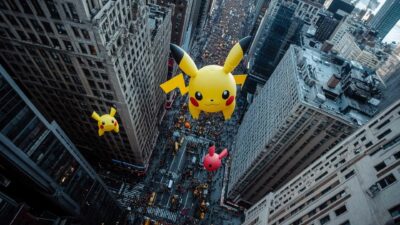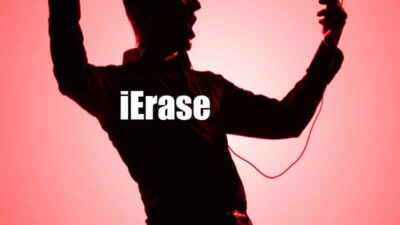 London has Big Ben, Paris has the Eiffel Tower , San Francisco has the Golden Gate Bridge and now Beijing has an iconic structure that’s likely to identify the city forever.
London has Big Ben, Paris has the Eiffel Tower , San Francisco has the Golden Gate Bridge and now Beijing has an iconic structure that’s likely to identify the city forever.
It’s an audacious monolith that looks like two drunken high-rise towers leaning over and holding each other up at the shoulders.
The eye-catching building, which is nearly finished, will be the headquarters of China Central Television, the staid propaganda arm of China’s ruling Communist Party , and it’s perhaps the boldest and most daring of several new buildings that have given Beijing a stunning new appearance for the upcoming Summer Olympic Games.
In keeping with the playful nature of the new buildings, all have weird popular names. There’s “the egg” and the “bird’s nest.” The “water cube” isn’t far away, and lastly there’s “short pants,” also known as the “twisted doughnut.”
The last of them is the new television building, the CCTV headquarters, and it can nearly make one dizzy standing on the ground and looking up at its odd, teetering 49-story towers connected by a multistory, cantilevered, jagged cross section over open space at a vertiginous 36 stories up in the air.
Designed by Dutch architect Rem Koolhaas, the building has been called an “angular marvel” and a “dazzling reinvention of the skyscraper.”
Its engineering is so complex that the designers say such a building couldn’t have been built a few years ago. That’s because it took immense computing power to ensure that the design could withstand huge pressures in the earthquake-prone capital. Some 10,000 tons of steel were used in its construction.
As much as it’s a challenge to gravity, the building is a challenge to the mind, critics say, defying conventions of skyscrapers as vertical shafts thrusting straight up.
“It captures the spirit of the country at this point in time, a really daring spirit to look into the future and try the impossible,” said Rocco Yim , a Hong Kong architect who sat on the jury in 2002 that selected the winning design for the tower.
Yim dismissed the criticism that’s poured in from ordinary Chinese, some of whom say the building lacks Chinese features. Others say it’s too costly, at $800 million , or that its 44-acre footprint is too big for such a central city location.
” The Eiffel Tower was detested by half the population of Paris when it was built,” Yim said.
Deng Xuexian, a professor of architecture at Tsinghua University , said new designs often generated opposition before they became recognized as global landmarks.
” The Sydney Opera House was criticized by many people, even members of Parliament. However, it has become a landmark construction of Australia ,” Deng said.
Even admirers sometimes voice ambivalent feelings.
“It is a little bit weird. I don’t know how it keeps steady,” said Hua Jia, a university design student. “But I think it is great, very modern.”
With the Olympic Games as a showcase, Beijing officials early this decade commissioned cutting-edge buildings, drawing the hottest designers from the global architectural world and giving a platform to what some wags dubbed “star-chitecture.”
Among the new buildings:
— The 91,000-seat Olympic Stadium is a tangle of seemingly random steel “twigs” curved into a graceful bowl and designed to look like a bird’s nest. Swiss firm Herzog & de Meuron, which also designed the Tate Modern museum in London , created the stadium.
— A stone’s throw from the “bird’s nest” is the “water cube,” an Olympic aquatic center covered with translucent blue panels that give it the appearance of being covered in bubble wrap. At night, it offers an otherworldly blue glow.
— In the heart of Beijing , slightly to the west of Mao Zedong’s portrait looking across Tiananmen Square , a shimmering, egg-shaped titanium dome rises from behind reflecting pools. Designed by French architect Paul Andreu , it’s the new National Theater . Most people just call it “the egg.”
— The dazzling new $3.8 billion terminal at Beijing Capital International Airport , designed by Briton Norman Foster and built by 50,000 workers in just four years, is purported to be the largest structure and the most advanced airport terminal in the world.
It might seem incongruous that a nation such as China , allergic to political reform and still insistent on calling itself communist, would willingly engage daring architects, spending vast sums on prestige projects.
Indeed, some foreign architects wriggle a bit when they’re asked whether they’re supporting China’s one-party state with their designs, retorting that the new buildings themselves coax China to engage more with the world, not only in appearance but in function.
CCTV, the sole Chinese broadcaster, with some 15 channels, wants one day to rival CNN and the British Broadcasting Corp. Its new headquarters includes broadcasting studios, program production facilities, digital cinemas and enough space to make it the second largest office building in the world, after the Pentagon outside Washington .
The architects have built huge glass panels in the floor of the cantilevered cross section of the building, so that visitors can get the woozy sensation of walking above nothing but air.


Frank Wilson is a retired teacher with over 30 years of combined experience in the education, small business technology, and real estate business. He now blogs as a hobby and spends most days tinkering with old computers. Wilson is passionate about tech, enjoys fishing, and loves drinking beer.





















